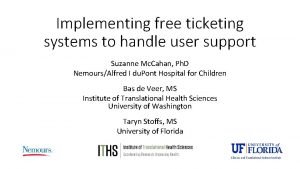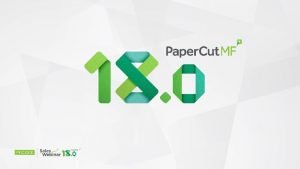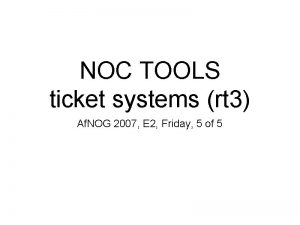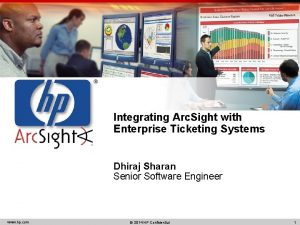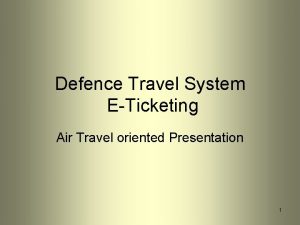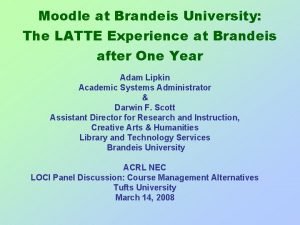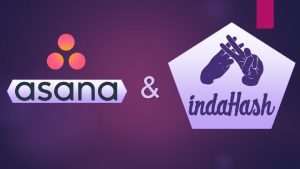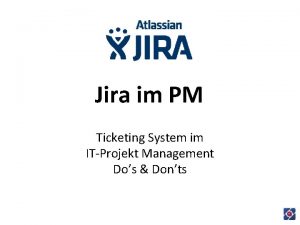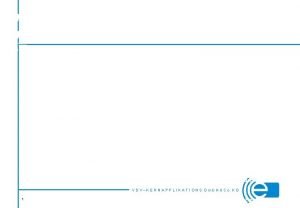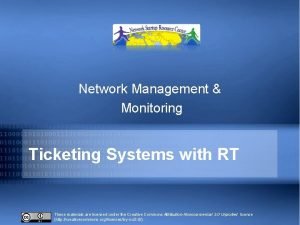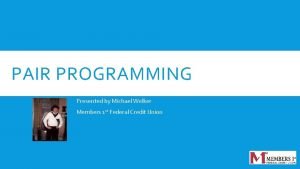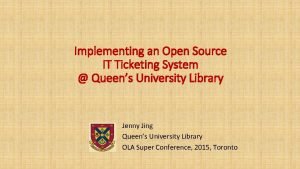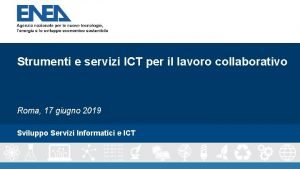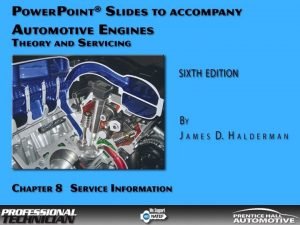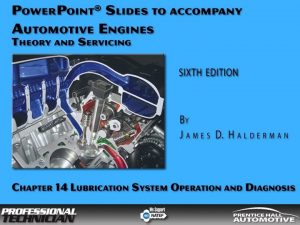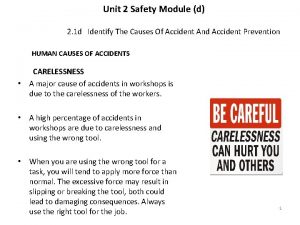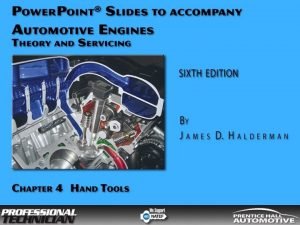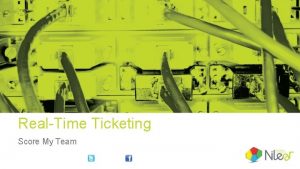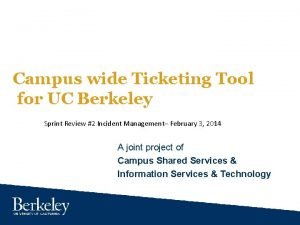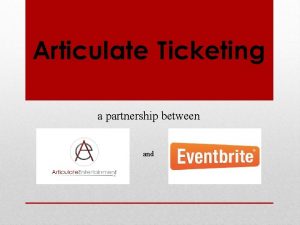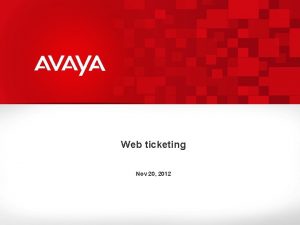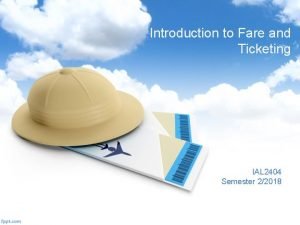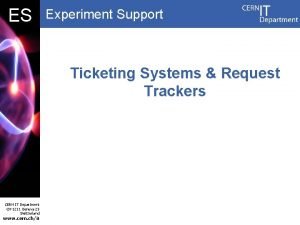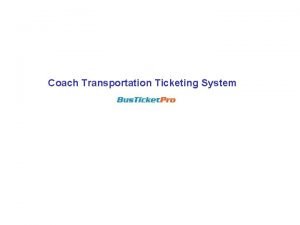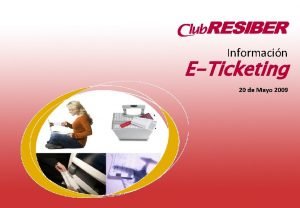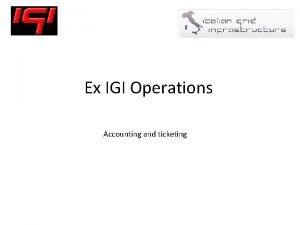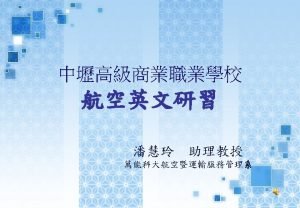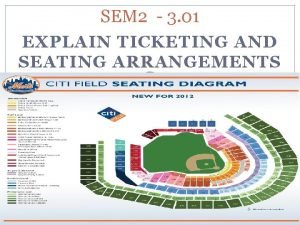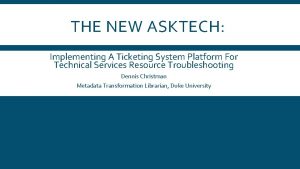TICKETING ESSENTIALS FOR TECHNICIANS AT THE UNIVERSITY OF

































- Slides: 33

TICKETING ESSENTIALS FOR TECHNICIANS AT THE UNIVERSITY OF OREGON UO Service Portal training Sean, Ben, Meni & Patrick 1

Agenda • UO Service Portal interfaces, environments and definitions • Demo • In class activity • Review 2

Objectives By the end of this class, you will be able to… • Log in to UO Service Portal and open the ticketing application • Create a ticket • Find tickets • Update a ticket • Set the ticket as “on hold” when waiting on information from the requestor • Reassign the ticket • Close the ticket

What’s not covered • “Advanced” ticketing: • • Bomgar Service level agreements Surveys Department specific workflows 4

INTERFACES AND ENVIRONMENTS 5

UO Service Portal Environments • Sandbox: https: //service. uoregon. edu/sandbox • Production: https: //service. uoregon. edu/ 6

Side note about the sandbox • Sandbox is refreshed regularly from production on the 1 st Sunday of every quarter 7

UO Service Portal interfaces: Today - Green • TDNext: For technichians • TDNext is a responsive website • TDClient: For end users, clients or customers who are requesting support https: //service. uoregon. edu/tdnext/ https: //service. uoregon. edu/tdnclient/ 8

Common steps in working on a ticket

“Classification” in UO Service Portal Classification Incident Service request Release Description Break-fix issues Request for common service Used as a parent ticket where you are needing to group up many service requests* *only use release when you need multiple requestors and multiple sets of tasks on individual tickets

“Status” in UO Service Portal Status Class New In Process Waiting for Customer On Hold Scheduled On Hold *On Hold will pause any active SLA Closed Completed Cancelled

Ticket creation: common fields Field Description Source Where did this ticket come from? Requestor Who is this ticket for? Acct/Dept Requestor’s department Services are things that can be ordered by users. Type Ticket types help identify what the issue is for reporting. Responsible Who will own this ticket. Title Short description of issue Description Longer description of issue, ideally with steps to repeat Location Where is this issue located? Impact How many people are affected? How widespread is this issue? (Only used for service outages) Urgency How severe is the issue to those affected? Priority Calculated by impact and urgency Due Date When should this ticket be completed?

CREATING A TICKET

Ticket creation 1. Go to TDNext (https: //service. uoregon. edu/sandbox) 2. Click on the "waffle" (upper left hand side) 3. Go to “Tickets” application 4. Click “New Service Request” 5. Choose requestor • Look up by Duck ID 6. Choose form 7. Populate fields 8. Save

UPDATING A TICKET

Ticket updates 1. Select the ticket Usually: Actions > Update • Comments & response templates • Public vs. private updates • Attributes to update • Notify to email the update • Feed updates and notifications include all changed data • Tickets update every 5 mins. You have to refresh. There is no auto-refresh

Response Templates • Used as a script for commonly requested issues that usually need clarification • Helps provide consistent formatting of emails • Similar to templates in RT 17

Update vs Comment • Update- opens full ticket for updating multiple fields • Comment – Adding a quick comment + notification option 18

Assigning Tasks • Open ticket • Select "Task/Activities" • Select "+Add" and then select "Task" • Fill out the fields and select "Save" 19

Find Tasks Assigned to You • Select "Tickets" • On left hand side select "Assigned to me" • You will see tasks assigned to you listed • Work the task assigned • Complete the task 20

Follow up with user • Use “On Hold” status • Set “Goes Off Hold” date • Notify user

Ticket escalation/ reassignment • Use Actions > Reassign

CLOSING A TICKET 23

Ticket closure • Use “Closed” • Notify user

Closed tickets may reopen • Tickets may reopen if requestors comment on them with in 10 days of the tech closing the ticket • If a customer responds to a ticket after 10 days, the information from original ticket is cloned to a new ticket 25

FINDING TICKETS

Finding tickets with searches 1. Go to TDNext 2. Go to “Tickets” application 3. Click on “Tickets” on the left 4. Click on the green funnel on the upper right hand side 5. Populate fields and click "Apply"

Other ways to find tickets • Service Request ID (Ticket ID) • Sending the link to another technician

Support for UO Service Portal • Service. uoregon. edu • Services • Request help with the UO Service Portal • UO Service Portal 29

REVIEW 30

Agenda review • UO Service Portal interfaces and environments • Common steps in working a ticket • • Creating a ticket Finding tickets Updating a ticket Closing a ticket • Review 31

Objectives recap By the end of this class, you will be able to… • Log in to UO Service Portal and open the ticketing application • Create a ticket • Find tickets • Update a ticket • Set the ticket as “on hold” when waiting on information from the requestor • Reassign the ticket • Close the ticket 32

THANK YOU!
 Request tracker system requirements
Request tracker system requirements Papercut job ticketing
Papercut job ticketing Noc ticketing system
Noc ticketing system What is resolution time in otrs
What is resolution time in otrs Papercut job ticketing
Papercut job ticketing Papercut job tickerting print management
Papercut job tickerting print management Rts amadeus
Rts amadeus Papercut job tickerting print software
Papercut job tickerting print software Enterprise ticketing systems
Enterprise ticketing systems Helpdesk pcda travel
Helpdesk pcda travel Latte.brandeis.edu
Latte.brandeis.edu Asana ticketing system
Asana ticketing system Pm
Pm Easy ticketing
Easy ticketing Rt ticket system
Rt ticket system Ats ticketing
Ats ticketing Episys ticketing
Episys ticketing It ticketing system open source
It ticketing system open source Ticketing enea
Ticketing enea All switches illustrated in schematics are
All switches illustrated in schematics are Two technicians are discussing tire rotation
Two technicians are discussing tire rotation Two technicians are discussing electromagnetic induction
Two technicians are discussing electromagnetic induction Two technicians are discussing oil changes
Two technicians are discussing oil changes D safety
D safety An ignition coil operates using the principle of
An ignition coil operates using the principle of Fundamentals of pharmacology for veterinary technicians
Fundamentals of pharmacology for veterinary technicians Two technicians are discussing torque wrenches
Two technicians are discussing torque wrenches Pharmacotritae
Pharmacotritae Where is connector c250 located?
Where is connector c250 located? Unit 2 communication
Unit 2 communication Two technicians are discussing a stepped ect circuit
Two technicians are discussing a stepped ect circuit Two technicians are discussing clogged egr passages
Two technicians are discussing clogged egr passages Redogör för vad psykologi är
Redogör för vad psykologi är Bästa kameran för astrofoto
Bästa kameran för astrofoto
